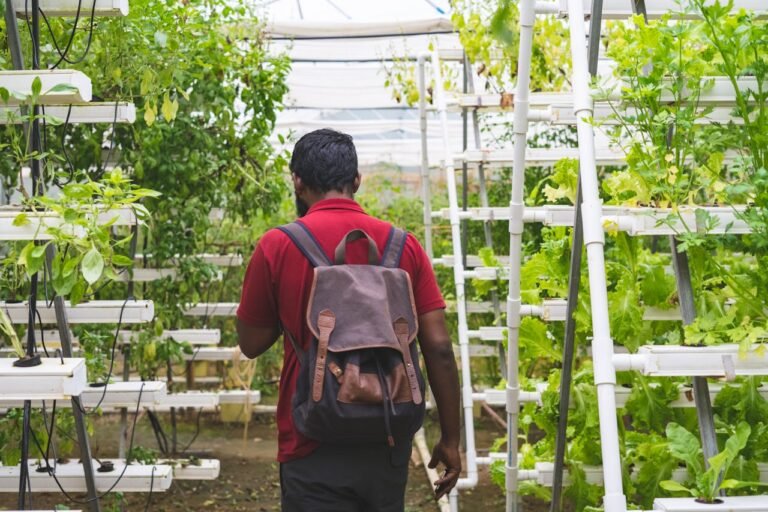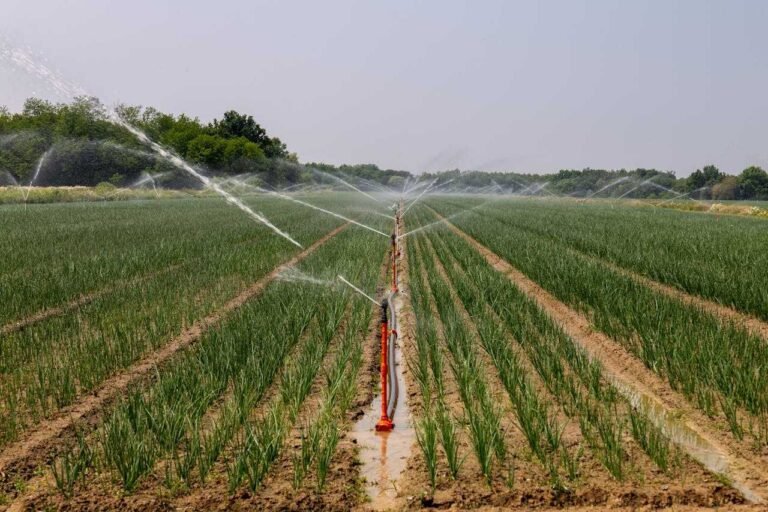Pros and Cons of the Green Revolution: Expert Guide
The Green Revolution is one of those turning points in history that changed the way we think about food and farming. It brought about groundbreaking advancements in agricultural techniques, helping many countries overcome food shortages and achieve food security. High-yield crops, chemical fertilisers, and modern irrigation systems became the new norm. For farmers like my grandfather, who once struggled to feed their families, it was a game-changer. Suddenly, fields that had yielded modest harvests were producing more than enough.
But with progress came challenges. I remember visiting a farm, a few years ago, where a seasoned farmer told me with a heavy heart, “The soil is tired. We used to rely on the earth’s natural strength, but now it’s addicted to chemicals.” His words hit home, reminding me that every advancement has its trade-offs.
In this guide, we’ll take an honest and balanced look at the Green Revolution—its pros, cons, and everything in between. Drawing from personal stories, expert insights, and well-researched data, we aim to provide a comprehensive view. Whether you’re a curious reader, a student, or someone passionate about sustainable agriculture, this exploration will shed light on the Green Revolution’s legacy and what it means for our future.
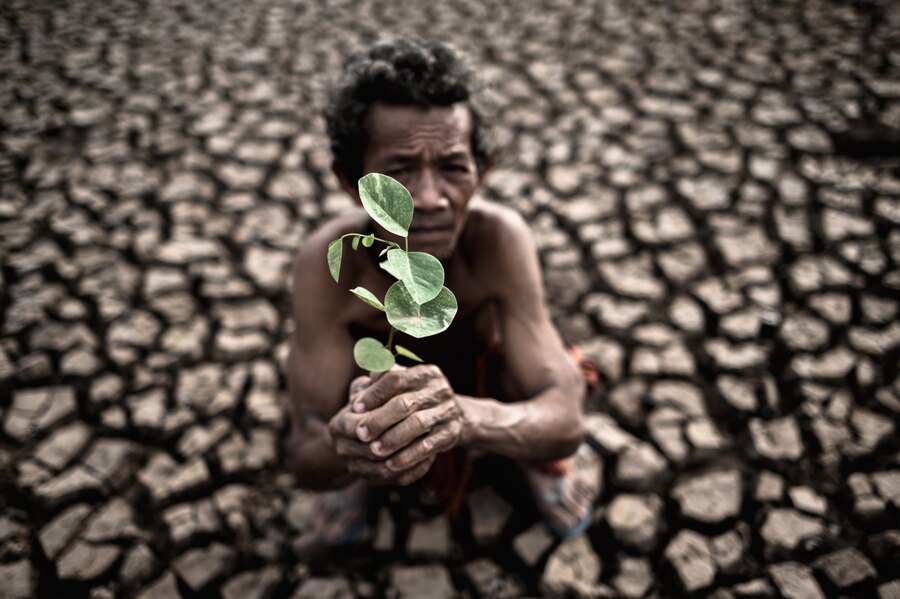
In This Article
- What Is the Green Revolution?
- Pros of the Green Revolution
- Cons of the Green Revolution
- Expert Insights
- Data Table: Green Revolution Impact Metrics
- Actionable Advice: Striking a Balance
- Conclusion
What Is the Green Revolution?
The Green Revolution was a major shift in agriculture that began in the mid-20th century to address global food shortages. It introduced new technologies and farming methods, particularly in developing countries, to increase food production. Scientists developed high-yield crop varieties, which produced significantly more grains like wheat and rice. Farmers also began using synthetic fertilisers to provide essential nutrients to plants, pesticides to protect crops from pests, and improved irrigation systems to ensure a steady water supply.
These advancements helped prevent widespread hunger by allowing farmers to grow more food on the same amount of land. Countries like India and Mexico, which once struggled with food shortages, saw remarkable increases in crop production. This meant fewer people went hungry, and economies in agricultural regions improved.
However, the Green Revolution also brought challenges. The increased use of chemical fertilisers and pesticides led to long-term soil degradation and environmental concerns. Small-scale farmers sometimes struggle with the rising costs of these inputs, making it harder for them to compete. Additionally, reliance on fewer crop varieties made food systems more vulnerable to pests and diseases.
Despite its successes, the Green Revolution showed that improving agriculture requires balancing productivity with sustainability to ensure food security for future generations.
Pros of the Green Revolution
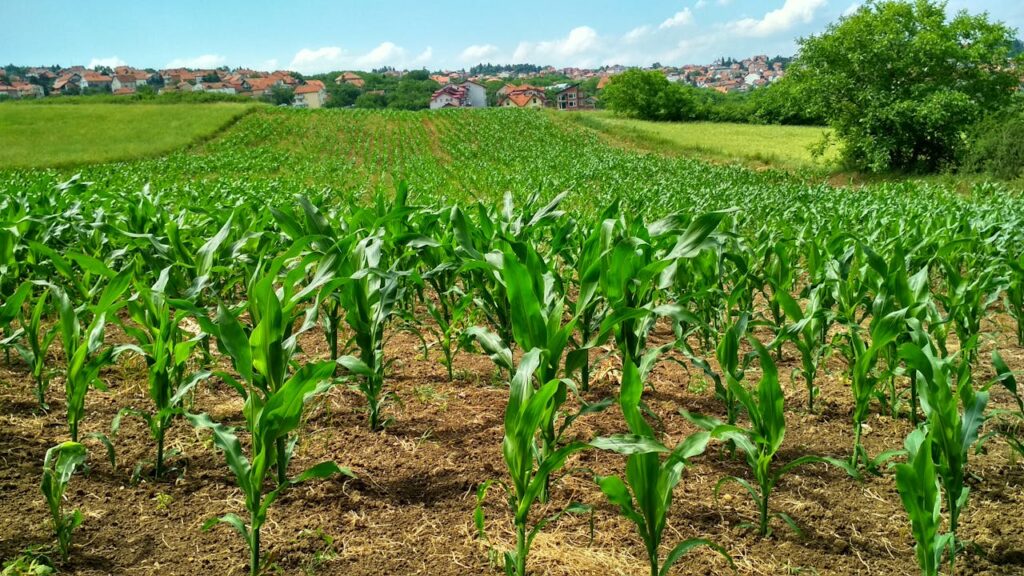
1. Increased Agricultural Productivity
Imagine being a farmer working from sunrise to sunset, only to harvest just enough food to barely feed your family. This was the reality for millions before the Green Revolution. With the introduction of high-yield crop varieties, better irrigation systems, and modern fertilisers, farmers suddenly could grow much more food on the same land.
Between 1960 and 2000, global cereal production doubled, according to the Food and Agriculture Organisation (FAO). High-yield crops like improved strains of rice and wheat allowed farmers to produce more per acre than ever before. This was life-changing.
Take India, for example. In the 1960s, the country was teetering on the edge of famine. Food shortages were common, and hunger was a daily struggle. But with Green Revolution technologies, India not only solved its food crisis but also became one of the world’s leading producers of wheat and rice. The once-barren fields of Punjab turned into a sea of golden grain, ensuring that families had enough to eat. Hunger, which once loomed over millions, began to retreat.
2. Improved Food Security
When you have enough food today, you can think about tomorrow. That’s what food security means—knowing that there will be enough food for you and your loved ones, no matter what challenges come your way. Before the Green Revolution, many families lived from harvest to harvest, uncertain if they’d have enough food the next season.
The World Bank reports that global hunger rates dropped significantly during the latter half of the 20th century, largely due to increased food production. Countries that embraced Green Revolution methods saw noticeable reductions in famine and malnutrition.
In the Philippines, for example, farmers began using improved rice varieties that could withstand harsh weather. This meant that even in tough seasons, families had enough to eat. Not only did these advancements provide stability, but they also allowed farmers to sell extra crops for income, creating a cycle of growth and resilience.
3. Economic Growth and Rural Development
More food didn’t just mean fewer empty stomachs; it also meant more money in farmers’ pockets. With higher yields, farmers could sell their surplus crops, earn a steady income, and invest in better tools, education for their children, and improved living conditions.
Before the Green Revolution, many rural communities were stuck in cycles of poverty. But as agricultural productivity increased, so did financial opportunities. Governments and private groups stepped in to build better roads, improve irrigation systems, and create storage facilities, making it easier for farmers to get their produce to market. This development generated jobs, strengthened economies, and improved living standards.
4. Technological Advancements
Before the Green Revolution, farming was backbreaking work. Farmers tilled the soil by hand or with simple tools, often struggling to cover large areas of land. The introduction of mechanisation changed everything. Tractors, harvesters, and better irrigation systems allowed farmers to work more efficiently, saving time and effort.
One major breakthrough was drip irrigation, which allowed farmers to use water more efficiently. This was a game-changer in dry regions where every drop of water mattered. Instead of wasting water through traditional flood irrigation, farmers could now deliver it directly to plant roots, reducing waste and boosting crop yields.
Mechanisation also had a social impact. In many communities, women and children spent long hours working the land. When modern tools were introduced, they reduced their workload, allowing them to focus on education and other opportunities. In Kenya, for example, women who once spent their days tilling soil by hand were able to start small businesses when their community pooled resources to buy a tractor. “We now have more time for other things—like running a business,” one woman said with a smile.
5. Strengthening Global Food Systems
The Green Revolution didn’t just help individual farmers; it also made entire nations more self-sufficient. Before, many countries relied on food imports to feed their populations. But with increased local production, nations could meet their own needs and even export food to others. This reduced dependency on foreign aid and strengthened national economies.
Take China, for instance. In the mid-20th century, the country faced major food shortages. However, after adopting Green Revolution technologies, agricultural output soared. Today, China is one of the world’s largest food producers, contributing to global food supply chains and ensuring stability for its people.
Learn More: How Does Industrial Agriculture Promote Farming Techniques that are Ecologically Destructive?
Cons of the Green Revolution
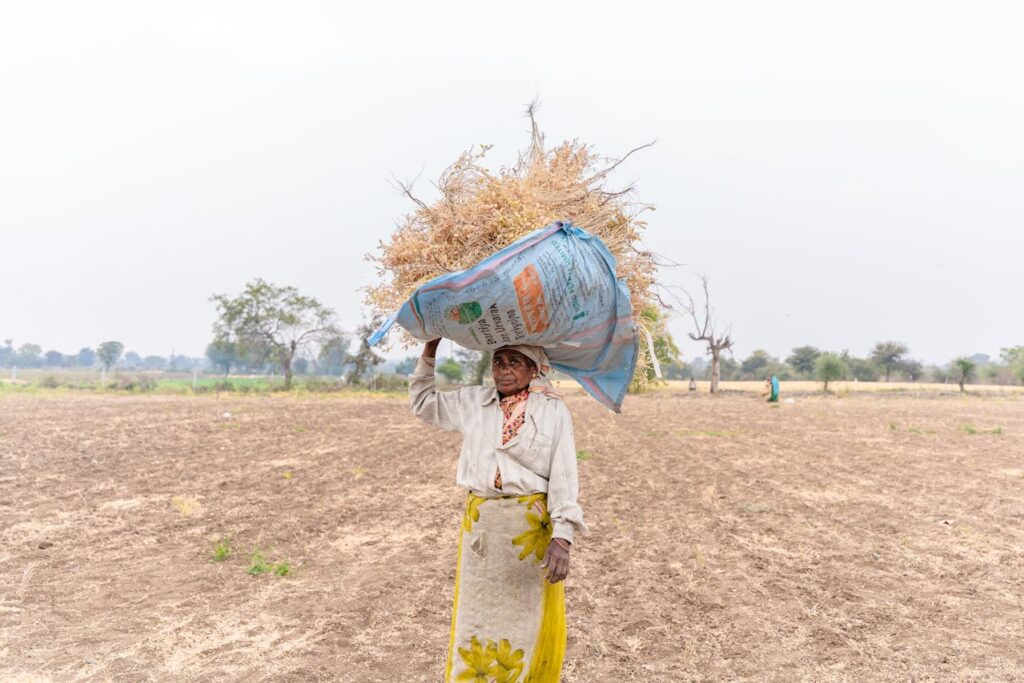
1. Environmental Degradation
One of the most serious consequences of the Green Revolution is environmental damage. The drive for higher yields led to the excessive use of chemical fertilisers, pesticides, and herbicides. While these inputs helped boost crop production in the short term, they also caused long-term harm to the soil, water, and ecosystems.
- Soil Depletion: Intensive farming exhausted soil nutrients, making it harder for the land to support crops naturally. Over time, farmers had to use increasing amounts of fertilisers to maintain yields, creating a cycle of dependency on artificial inputs.
- Water Pollution: Runoff from fertilisers and pesticides seeped into rivers, lakes, and groundwater, contaminating drinking water sources and harming aquatic life. A study published in Environmental Research Letters found that groundwater contamination is a severe issue in regions heavily impacted by the Green Revolution.
- Loss of Soil Microorganisms: The heavy application of chemicals disrupted natural soil ecosystems, reducing the presence of beneficial microbes that help plants grow. This not only affected soil health but also made crops more dependent on synthetic fertilisers.
- Desertification: In some areas, repeated crop cycles without proper soil conservation measures led to land degradation, making previously fertile regions barren.
2. Loss of Biodiversity
Before the Green Revolution, farmers grew a wide variety of crops suited to local climates and conditions. The introduction of high-yield hybrid crops changed this. Farmers were encouraged to cultivate only a few staple crops, such as wheat and rice, at the expense of traditional varieties. This shift led to:
- Reduction in Crop Diversity: Many indigenous and heirloom crop varieties disappeared, reducing genetic diversity in agriculture. This loss makes food systems more vulnerable to pests, diseases, and climate change.
- Increased Vulnerability to Crop Failures: With limited genetic diversity, crops became more susceptible to outbreaks of pests and plant diseases. When one variety dominates agriculture, a single disease or pest can wipe out an entire region’s food supply.
- Dependence on Seed Companies: Farmers moved away from saving and exchanging seeds, relying instead on commercial seed suppliers for hybrid varieties. This dependency increased costs and reduced traditional farming autonomy.
3. Economic Inequality
While the Green Revolution helped increase food production, it did not benefit all farmers equally. The shift to high-yield farming required significant investment in irrigation systems, chemical fertilisers, and advanced machinery—resources that not all farmers could afford.
- Small Farmers Left Behind: Wealthier farmers who could afford modern agricultural technology saw their incomes rise, while smaller farmers struggled to keep up. Many small-scale farmers were unable to compete and were either forced to take on debt or abandon farming altogether.
- Land Concentration: As larger, well-financed farms thrived, they bought out struggling small farmers, leading to greater land concentration in the hands of a few. This trend further widened the economic gap in rural areas.
- Debt Traps: Farmers who took loans to invest in Green Revolution technologies often faced financial hardship when yields didn’t meet expectations or when market prices fluctuated. Many fell into debt cycles, with some even losing their land.
- Migration and Urbanisation: With fewer opportunities in rural areas, many small-scale farmers and agricultural labourers migrated to cities in search of work. This rapid urban migration contributed to overcrowding and increased pressure on urban infrastructure.
4. Health Risks
The widespread use of chemical pesticides and herbicides brought unintended health consequences for farmers and consumers alike.
- Pesticide Exposure: Farmers and agricultural workers who handled chemical pesticides often suffered from chronic health problems, including respiratory issues, skin conditions, and neurological disorders. A 2024 study published in the journal Toxicology Reports linked long-term pesticide exposure to increased risks of cancer and hormonal imbalances.
- Contaminated Food and Water: Residues from pesticides and fertilisers made their way into food and drinking water, posing risks to consumers. Long-term exposure to these chemicals has been associated with developmental issues in children, immune system suppression, and other health concerns.
- Antibiotic Resistance: The increased use of chemicals in agriculture also contributed to antibiotic resistance, as residues from livestock treated with antibiotics entered human food systems.
- Impact on Pollinators: Pesticides such as neonicotinoids have been linked to declining bee populations. Since bees and other pollinators play a crucial role in food production, their decline threatens future agricultural sustainability.
Expert Insights
Dr. Anjani Kumar, a Senior Research Fellow at the International Food Policy Research Institute, believes it’s time to rethink how we farm. He emphasizes that sustainable practices are key. These are methods that not only help us grow more food but also take care of the environment. Dr Kumar explains that this balanced approach ensures we meet today’s food needs while protecting the planet for future generations. His work underscores the importance of looking beyond just immediate crop yields to consider long-term soil health and water conservation, addressing some of the shortcomings of the Green Revolution, such as soil degradation and excessive water use.
Raj Patel, a researcher at the University of Texas at Austin and author of Stuffed and Starved: The Hidden Battle for the World Food System, has studied the global food system in depth. He warns about the dangers of industrial agriculture, which often prioritizes profits over sustainability. Patel advocates for agroecology—a way of farming that works in harmony with nature. This approach uses techniques like crop diversity and natural pest control instead of relying heavily on chemicals. According to Patel, understanding the deep connection between farming, society, and the environment is crucial. He believes that by adopting more nature-friendly methods, we can develop a food system that is both productive and sustainable, benefiting farmers, consumers, and the planet alike.
Learn More: How to Start Vertical Farming At Home: A Comprehensive Guide
Data Table: Green Revolution Impact Metrics
| Metric | Pre-Green Revolution | Post-Green Revolution | Impact |
|---|---|---|---|
| Global Cereal Production | 1 billion tons | 2.5 billion tons | Increased food availability |
| Hunger Rates | High | Moderate | Reduced malnutrition |
| Fertilizer Usage | Minimal | Extensive | Environmental concerns |
| Crop Biodiversity | High | Low | Loss of genetic diversity |
Actionable Advice: Striking a Balance
- Adopt Sustainable Farming Practices:
- Incorporate crop rotation and organic fertilisers to maintain soil health.
- Promote Biodiversity:
- Cultivate diverse crop varieties to enhance resilience against pests and diseases.
- Support Small-Scale Farmers:
- Advocate for policies that provide financial and technical support to marginalised farmers.
- Reduce Chemical Usage:
- Opt for integrated pest management (IPM) strategies to minimise pesticide use.
Conclusion
The Green Revolution was a monumental achievement that addressed global food insecurity and transformed agriculture. However, its long-term consequences remind us that innovation must be balanced with sustainability. By learning from the past and adopting more holistic approaches to farming, we can ensure a future where both people and the planet thrive.
As my grandfather once said, “The land gives us life; we must treat it with respect.” Let’s heed that wisdom and cultivate a greener, more sustainable future.
References for Further Reading
- FAO. “The State of Food and Agriculture.” 2000.
- Kangkhetkron, T., & Juntarawijit, C. (2024). Pesticide exposure and lung cancer risk: A case-control study in Nakhon Sawan, Thailand. F1000Research, 9, 492.
- Marouane, B., Belhsaien, K., Jahdi, M., & Satrallah, A. (2014). Impact of agricultural practices on groundwater quality: Case of Gharb region-Morocco. ResearchGate.

